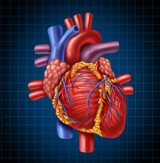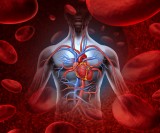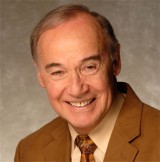Browse Library Database [H]
This is out Library. Please click on the article title to view the details.
Heart Attacks Overview
submitted by: admin on 02/20/2015
The causes, symptoms, diagnosis, treatment, and consequences of heart attacks are reviewed. Laboratory tests to assess the extent and dangers of arteriosclerosis are described and mainstream and alternative forms of treatment offered. Prevention and reversibility are reviewed.
Heart Conditions
submitted by: admin on 02/18/2015
Heart disease is the leading cause of death in the world. In the US alone, there are about 600,000 deaths annually and millions who have severe disabilities from its manifestations. Heart attacks are preventable. One hundred years ago they were rare! Lifestyle is the most imporant treatment to prevent and manage heart disease.
Yet it is a partnership...
Heart Disease
submitted by: admin on 09/23/2013
This the number one cause of death in the US. We don't deal with underlying causes and tend to rely on treating symptoms. There is much to be learned from a good workup that can reverse this disease.
Heart Monitoring During Anesthesia
submitted by: admin on 09/23/2013
Only 35% of anesthesiologists monitor cardiac output during surgery. For high risk surgeries this is dangerous as it is critical to know if adequate oxygenation of tissues is being accomplished. It is critical to know the level of hemoglobin in our red cells, as that determines how much oxygen carrying capacity we have. It is also important to know that enough...
Heart Murmurs and Antibiotic Prophylaxis
submitted by: admin on 12/16/2025
needs
Heart Nutrition and Congestive Heart Failure
submitted by: admin on 09/24/2013
Using nutritional medicine to support heart function is critical, especially in congestive heart failure. Drugs may be necessary, but they all have side effects and should be used only after safer nutritional approaches are tried unless there is an emergency.
HeartMath with David McArthur, JD
submitted by: admin on 09/24/2013
Reverend McArthur wrote the book, The Intelligent Heart, with his father. He reviews what it is, how it works, and its applications. It can influence the subconscious mind and our thoughts in amazing ways in just a few minutes.
Heavy Metal Detoxification with Catherine Fehrmann, MD
submitted by: admin on 09/24/2013
Amalgam removal is very complex and should be supervised by an expert in detoxification. Dr. Catherine Fehrmann explains aspects of how this can be diagnosed and treated safely and efficiently.
Help & Frequently Asked Questions about DoctorSaputo.com
submitted by: admin on 12/16/2025
The following represent a growing list of questions that we are asked about DoctorSaputo.com which we hope will help improve your experience on this site:
Help: How to Join a Video Conference
submitted by: admin on 11/01/2013
Step by step instructions for joining a video conference on Doctorsaputo.com. In order to join a video conference you must be a member of the site. Joining is easy and is free. If you are a member already, make sure you are signed in and on your homepage dashboard. If you are not yet a member, click here to sign up.
Herniated Disks: Is Surgery Necessary?
submitted by: admin on 12/16/2025
Surgery is not the first approach to consider most of the time for herniated discs as much of the time they spontaneouly heal. The pros and cons of the various styles of treatment are discussed. In a large study the outcomes of surgery vs physical therapy and exercise were identical. Integrative therapies are reviewed.
HHS Approves Phoney IRB
submitted by: admin on 12/16/2025
Many medical clinical trials are funded with insufficient review. Just how ridiculous it can be is explored. When funding for research is limited as it is today, we must guide the expenditure of dollars as carefully as possible.
Hiatal Hernia Health Assessment
submitted by: admin on 02/20/2015
Dr. Saputo's Hiatal Hernia Health Assessment investigates your symptoms, treatment, possible complications, workup, and offers nutritional approaches to managing this disorder. You will get instant feedback in audio and video that will educate and guide you to making wise choices about how to manage your condition.
Hiatal hernias...
Hiatal Hernia, Barrett's Esophagus, and Esophageal Cancer
submitted by: admin on 09/24/2013
Barrett's esophagus develops in people who have bile reflux into the stomach and lower end of the esophagus in the presence of a hiatal hernia. It causes "intestinalization" of the lower end of the esophagus, which is then prone to develop esophageal cancer. However, unless there is dysplasia of the Barrett's esophagus, the risk for...
Hiatal Hernias
submitted by: admin on 09/24/2013
The anatomy and physiology of a hiatal hernia is described. Its complications are reviewed including pain, strictures, Barrett's esophagus and esophageal cancer. Mainstream and alternative therapies are described as are their side effects and complications.
Hiatal Hernias: How to Manage Them
submitted by: admin on 09/24/2013
Hiatal hernias and their complications are defined and treatments offered. The physiology and the complications of treatment are reviewed.
Hiatal Hernias: Nutritional Support Protocol
submitted by: admin on 11/27/2013
Hiatal hernias develop when the opening between the esophagus and stomach is too wide and cannot fully close. This allows food in the stomach to regurgitate into the lower end of the esophagus and, because it does not have the protective lining the stomach has, to burn it with stomach acids. This can lead to "intestinalization" (looks...
High Blood Sugar, Elastin, Ferroelectricity and Aging
submitted by: admin on 09/24/2013
Ferroelectricity is the response of a molecule to switch from a positive to a negative charge and is necessary to maintain the elasticity of elastin, a protein that gives elasticity to tissues such as blood vessels as well as heart and lung tissue. Ferroelasticity of elastin is lost when blood sugar levels rise and this causes it to lose about 50%...
High Calcium Intake Doubles Risk for Heart Disease
submitted by: admin on 09/24/2013
Calcium intake above 1400 mg per day is associated with doubling the risk of dying from a heart attack in both men and women. There are many studies showing that in women with osteoporosis who take large doses of calcium are at risk for both heart attacks and stroke.
Although it may be logical to try and replace the lost calcium in bone in osteoporosis...
High Dose Statins Associated with Increased Risk of Diabetes
submitted by: admin on 09/24/2013
A meta-analysis showed that high dose statin therapy as primary prevention caused an increased risk for type 2 diabetes. The article published in JAMA goes on to say that treatment of 32,000 non-diabetics with 5 years high dose statin treatment caused 149 more cases of type 2 diabetes, but 416 fewer cardiovascular events.This is a very misleading journal article...




